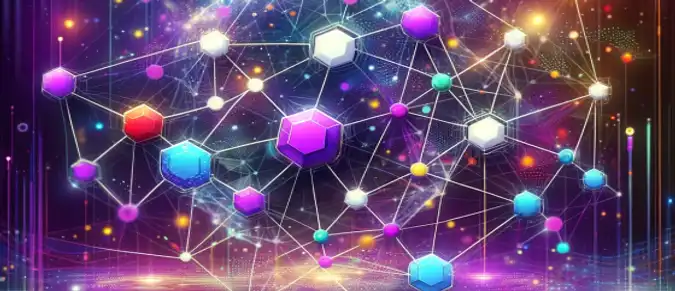Polkadot is a decentralized blockchain platform designed to connect and protect various blockchains. The architecture of Polkadot creates a basic network with an increased level of security for all its participants, simplifying the process of creating unique blockchains, facilitating integration with existing blockchains, and paving the way for the future of Web3.

What is Polkadot
Polkadot is an innovative blockchain platform that revolutionizes the way data, assets, and digital certifications are transferred across various blockchains. This platform uses open-source and permissionless, allowing developers to create applications and services compatible with multiple blockchains. Polkadot has its own token DOT, which is used for staking on the network.
Based on the concept of a "bridge", Polkadot connects various blockchains, providing scalability and the ability to create applications and services compatible with multiple blockchains. The platform also uses a "proof of stake" consensus mechanismfor validators to stake DOT tokens.
Parachains linked to Polkadot have independent governance and ensure transparency. Thanks to these procedures, Polkadot and its parachains can quickly adapt to new technologies and changes.
Currently, Polkadot has over 10,000 active users and a market capitalization of $750 million.
What is DOT?
DOT is Polkadot's native token. DOT owners can use their tokens to participate in the governance of the network, as well as in staking and bonding processes.
Staking is a way to earn rewards by contributing to the security of the network. Unlike traditional blockchains that use energy-intensive mining to protect the network, Polkadot has validators. They perform transaction verification in the network. DOT owners can participate in staking by selecting validators they trust or delegating the choice of validators to third parties.
Bonding in Polkadot is a way in which parachains (sidechains) connect to the Relay Chain, main network. Parachain developers participate in an auction for an open slot on the Relay Chain, and DOT owners can temporarily lock their tokens (bond them) in a "crowdloan" to help developers win this slot. In return, they may receive a reward offered by the parachain developers for bonding their tokens.
Also, the DOT token is used to reward validators for their work in the network.
| Term | Description |
|---|---|
| Validators | Users who stake their DOT tokens as collateral for verifying transactions in the Polkadot network. |
| Collators | Participants responsible for packing and sending blocks from parachains into the Polkadot network. |
| Beacon Chain | The Polkadot chain that manages and coordinates the operation of parachains. |
| Parachains | Independent blockchains connected to the Polkadot network. |
| Parathreads | Protocols that facilitate data exchange between parachains and the beacon chain. |
| Bridges | Specialized blockchains that allow data and assets to be transferred between different blockchains. |
| Other Blockchains | Blockchains not connected to the Polkadot network. |
Blockchain Security
Polkadot has a robust security system, despite being an open-source protocol open to anyone who wants to participate.
- Firstly, Polkadot uses a "proof of stake" consensus mechanism, requiring validators to invest their DOT tokens in the network for participation. This provides protection against potential malicious actors trying to gain control.
- Secondly, Polkadot is a "multichain" system, allowing multiple blockchains to be combined, making an attack on the entire network more complex, as it includes several parallel chains.
Additionally, the platform has a built-in security protocol to protect data, assets, and digital certifications.

The Future of Polkadot
Polkadot has a bright future ahead. The platform is constantly evolving, offering users new features and benefits. Moreover, it is gaining popularity in the blockchain world as more developers and companies begin to create applications and services on this platform.
One of the key aspects of Polkadot's future is its decentralized approach to network governance. Unlike many other blockchains where decisions about the network are made by a limited group of people, DOT token owners can vote on network updates and elect council members who will represent their interests in the network.
All this guarantees that the future of Polkadot will be prosperous and secure for developers and users.



